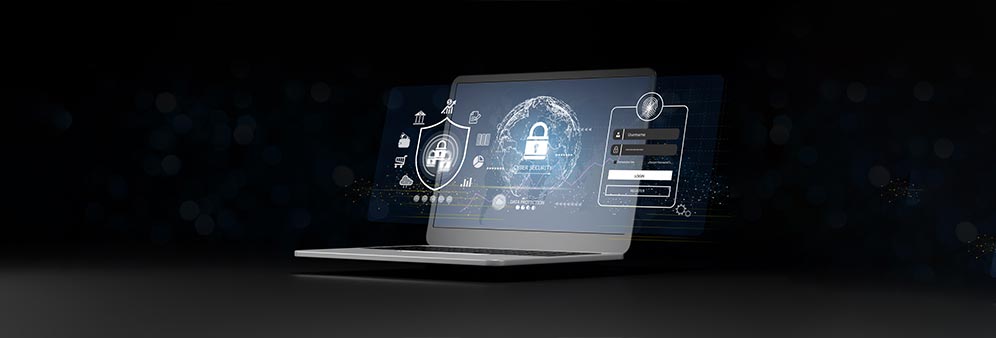What is cyber security, and why is it important?
In today’s world, the internet has become an indispensable part of our lives. With the rise in digital devices and internet usage, the risks associated with cyber threats have grown exponentially.
Cybersecurity is a term that encompasses the techniques, technologies, and practices designed to protect our digital devices, networks, and data from unauthorised access, damage, or theft. In this blog, we will discuss the importance of cybersecurity, the role of cybersecurity professionals, the types of cybersecurity, the concept of zero trust, and the tools used in cybersecurity.

What is cybersecurity?
Cybersecurity protects digital devices, networks, and data from unauthorised access, theft, and damage. It involves implementing measures to secure computer systems, networks, and software from cyber threats, such as viruses, malware, ransomware, and other forms of cyber-attacks. Cybersecurity aims to ensure data and systems’ confidentiality, integrity, and availability.
Why is cybersecurity important?
Cybersecurity is vital for several reasons:
Protection of sensitive data:
Cybersecurity measures help protect sensitive information from falling into the wrong hands. This can include personal information, financial data, and trade secrets.
Business continuity:
Cyber-attacks can lead to significant downtime, resulting in financial losses and damaging an organisation’s reputation. Cybersecurity helps businesses maintain their operations and minimise the impact of a cyber-attack.
Compliance with regulations:
Organisations must comply with various cybersecurity regulations, such as the General Data Protection Regulation (GDPR), to protect user data and avoid legal penalties.
National security:
Cybersecurity is crucial for protecting critical infrastructure, such as power grids and transportation systems, from cyber-attacks that could cause widespread disruption.
Read More: Improve your business cyber security

What does a cybersecurity professional do?
A cybersecurity professional protects an organisation’s digital assets from cyber threats. They perform various tasks, including:
Risk assessment:
Identifying vulnerabilities and potential threats to the organisation’s digital assets.
Implementation of security measures:
Designing and deploying security solutions to protect against cyber threats.
Monitoring and incident response:
Continuously monitoring for security breaches and responding to incidents when they occur.
Security training and awareness:
Educating employees on best practices for maintaining cybersecurity.
Compliance and regulation:
Ensuring the organisation adheres to relevant cybersecurity laws and regulations.
What are the types of cybersecurity?
There are several types of cybersecurity, each focusing on a specific aspect of digital protection. Some of these include:
Network security:
Protecting an organisation’s network infrastructure from unauthorised access and attacks.
Application security:
Ensuring the safety of software applications by identifying and fixing vulnerabilities and weaknesses.
Endpoint security:
Safeguarding endpoints, such as laptops, smartphones, and other devices, from cyber threats.
Data security:
Protecting data stored in databases and other storage systems from unauthorised access and tampering.
Cloud security:
Securing data and applications hosted on cloud platforms from cyber threats.

What are the types of cybersecurity?
Zero Trust is a security model that assumes no user, device, or network can be trusted by default. Instead, access to resources is granted based on strict verification of the user’s identity and the context in which the request is made. This model aims to minimise the risk of unauthorised access, even from within an organisation’s network.
What are the tools used in cyber security?
There are various tools available for cybersecurity professionals to use in their efforts to protect digital assets. Some of these include:
Antivirus and anti-malware software
Tools designed to detect, prevent, and remove malicious software, such as viruses, worms, trojans, and ransomware.
Firewalls
Security systems monitor and control incoming and outgoing network traffic based on predetermined security rules, helping to block unauthorised access to an organisation’s network.
Intrusion detection and prevention systems (IDPS)
Tools that monitor network traffic for suspicious activity and potential threats, alerting security teams when a possible breach is detected.
Encryption tools
Software helps protect data by converting it into an unreadable format, making it difficult for unauthorised users to access the information.
Virtual private networks (VPNs)
Services that create encrypted connections between users and remote networks, allowing for secure communication over the internet.
Security information and event management (SIEM) systems
Platforms that collect and analyse security events from various sources, providing real-time monitoring, alerts, and reports to assist in identifying and responding to potential threats.
Vulnerability scanners
Tools that scan networks, systems, and applications for security weaknesses and vulnerabilities, helping organisations identify and fix potential threats.
Patch management tools
Software solutions that help organisations identify, prioritise, and apply security updates and patches to their systems, ensuring they remain protected against known vulnerabilities.
Multi-factor authentication (MFA) solutions
Technologies that require users to provide two or more forms of identification before granting access to systems or data reduce the likelihood of unauthorised access. Security awareness training platforms are tools that educate employees on best practices for maintaining cybersecurity, helping to minimise the risk of human error leading to security breaches.
Conclusion
Cybersecurity is an essential aspect of modern life as it helps to protect our digital devices, networks, and data from unauthorised access, damage, or theft. The field encompasses various specialised areas and requires skilled professionals to manage and secure digital assets effectively.
By understanding the importance of cybersecurity, the role of cybersecurity professionals, the different types of cybersecurity, and the tools and strategies available, organisations and individuals can take proactive steps to protect themselves in the digital world.
Read More: Cyber Essentials Certification

Lets Talk!
If you have additional comments or questions about this article, you can share them in this section.